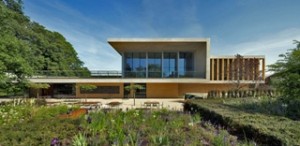After a highly anticipated wait, the Stirling Prize, one of the UK’s biggest architecture prizes, was announced in Manchester last Saturday. From the judges’ perspective, the project that has made the “greatest contribution to the evolution of architecture in the past year” was the Sainsbury Laboratory – an 82 million pound science facility by Stanton Williams that promotes practically through its botanical research, energy efficiency and green approach.
Looking for a design that “didn’t shout ‘look at me’”, was perhaps a deciding factor for the judges, and a reason that more extravagant buildings such as the 2012 Olympic Games stadium and The Hempworth Gallery were not chosen. The judges’ initial comments show their preference of interwoven style and design; “The in-situ concrete detailing and build quality are impeccable throughout. This building is an exciting new typology, with spaces for research juxtaposed with those for education; the private and the public; the highly-technological nurture of nature with the simple enjoyment of an extended botanic garden.”
After the prize was awarded, the judges also commented on its design, describing it as a “timeless piece of architecture, sitting within a highly sensitive site, one overlooking the woods where Darwin walked with his tutor and mentor (John Stevens) Henslow, discussing the origin of species”.
The shift to simple, elegant design may be a message to other architects, as Stanton Williams have not been nominated on the short list before, and the project has not the typical grandeur of previous winners such as The Scottish Parliament (2005) or MAXXI National Museum(2010). The disappointment from the Hempworth Gallery director Simon Wallis, saying it “isn’t a building that excites” him, shows this new approach may be harder to swallow for some.
|
|
About ODS contributor
View all posts by this author » |










